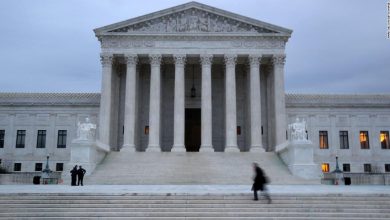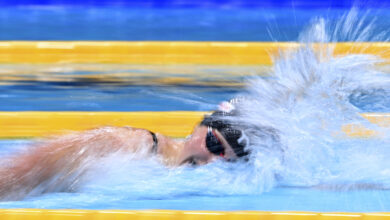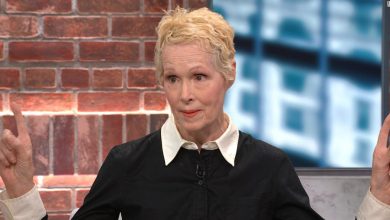Opinion | More Public Pools Could Save Thousands of Lives

As a young child in New Orleans, Raychelle Ross fell into one of the city’s many canals and nearly drowned.
Years later, as Hurricane Katrina bore down on the city, Ms. Ross fled the rising waters on a bus with two tiny babies in tow.
In 2016, one of those children, Bennasia, drowned in a backyard pool. “I don’t play with water,” Ms. Ross told me. “I’ve always been afraid.”
Bennasia was one of the estimated 4,000 people who die by drowning every year across the United States in a public health crisis America has largely ignored. As summers grow hotter, taking a dip at the nearest swimming hole could offer some of the balm that this weary, divided country needs: a chance to cool off and play together, to get healthier, to have some fun. Instead, the United States is, for a majority of its citizens, a swimming desert where, according to a Red Cross survey, more than half of the population lacks basic swimming abilities and millions are without access to safe places to enter the water. Many in Black American families don’t know how to swim or don’t know how to swim well. Millions of Americans of other races don’t, either. On average, 11 people die by drowning every day.
After years of inaction by the authorities, this rolling American disaster is finally beginning to draw some of the attention needed to save lives. A coalition of experts this summer published the first ever U.S. Water Safety Action Plan, a much-needed 10-year national road map to reduce drowning. The United States is one of the few developed countries in the world without such a plan. Some recommendations, like increasing the use of life jackets in lakes, oceans and rivers, could be carried out by states and local governments. Others — like the creation of a public health surveillance system to collect better data around drowning — are worthy of urgent action from the White House and Congress.
Hiding in plain sight, though, is a much larger opportunity to significantly reshape the way we live with the water around us, in the country’s biggest cities, in its most remote rivers and lakes and in its suburbs. The United States doesn’t have to accept these deaths. Nor does it have to retreat from the water to save lives. America can build more public pools. It can transform natural bodies of water into safer places to swim. It can subsidize swimming lessons and raise pay for lifeguards, making the job more attractive. The United States can build a culture of swimming instead of one of drowning.
A health crisis ignored
The national data, from the Centers for Disease Control and Prevention, is sobering: Drowning is the leading cause of death among 1- to 4-year-olds, the second-leading cause of accidental deaths by injury among children 5 to 14, and the third-leading cause of accidental death by injury for Americans 24 years and younger. Younger Black adolescents are more than three times as likely to drown as their white peers; Native American and Alaskan Native young adults are twice as likely to drown as white Americans. Eight in 10 drowning victims in the United States are male. Children with autism are 160 times as likely to drown or experience near-fatal drowning, a serious medical event that can cause severe and often permanent physical harm. The C.D.C. estimates that drowning costs the U.S. economy $53 billion each year.
Despite this, the work of water safety has largely been left to nonprofit groups, which, no matter how dedicated, cannot reach every American. Congress and the White House could act together to fix this and save lives. Requiring a federal agency to oversee drowning prevention policy and build a better public health surveillance system around drowning deaths, both recommendations in the plan, would be a good start. But the transformative move would be to build far more public pools across the United States.
Too few public pools
There are more than 10 million private swimming pools in the United States, according to a C.D.C. estimate, compared with just 309,000 public ones. That figure includes pools that belong to condo complexes, hotels and schools, so the number of pools truly accessible to the public is even smaller. The biggest reason so many Americans can’t swim is that they have too few places to learn to do so.
By many available measures, public pools can be the safest places to swim. They are more likely to be better maintained and importantly, staffed by lifeguards. Many provide free or low-cost swim lessons, something millions of Americans couldn’t otherwise afford. They give kids a safe place to play. They offer the promise of a safe dip to anyone who wants one and to many who have nowhere else to go.
Yet the United States hasn’t made a serious investment in public pools since the Great Depression, when scores of grand public pools were erected in many parts of the country under President Franklin Roosevelt’s New Deal programs, according to Jeff Wiltse, the author of “Contested Waters,” a book about the history of swimming pools.
Then the expansion stopped. In the 1960s, many towns across the South filled or destroyed their public pools rather than allow Black Americans to swim in them. Northern cities, strapped for resources amid suburbanization and white flight, struggled to maintain their pools. This is how public investment in pools withered, one more ghastly sacrifice America has laid at the altar of anti-Black racism and twisted fears about miscegenation.
White Americans with the means to do so built private pools and joined exclusive swim clubs instead. As their children swam, entire generations of Black Americans, white Americans living in poverty and others were denied the chance to learn a skill that can save lives, can bring joy and is arguably the birthright of every human being. Many parents who never learned to swim have struggled to provide that opportunity to their children or passed down their fears around water, continuing the cycle.
The Reagan era, which glorified privatization and smaller government, only cemented the mind-set that led the country to abandon the idea that public pools should be a national priority. “There’s a fantastic amount of wealth within the United States, and yet we’re extraordinarily parsimonious in our willingness to fund public swimming pools,” Mr. Wiltse told me. In America today, swimming is a luxury, not a public good.
In this summer’s widespread heat wave, millions of Americans are sweating it out without a safe place to swim. The dearth of public pools makes it harder to learn basic water safety skills or simply cool off in a country broiling from the extreme heat of climate change. The problem has been exacerbated in recent years by a national lifeguard shortage, leading to partly closed beaches and public pools. Along the New York City waterfront this summer, hordes of swimmers are crowding together in small sections of sand while expanses of beach sit empty for want of lifeguards. Lines of sweaty New Yorkers form outside city pools that are operating at reduced capacity.
Dangerous waters
One reason drowning rates are so high is that when a safe place to swim isn’t readily available, Americans often enter the water anyway, seeking relief from the heat wherever they can. In New York City alone, at least four teenagers have drowned since 2010 trying to swim in the Bronx River. The Bronx is home to more than 1.4 million people but has just eight open public pools. That’s about one pool for every 175,000 people.
In New Orleans, Ms. Ross said, she frequently struggled to find a place for her children to swim, something they loved to do. The city was once home to the historic Audubon Park Natatorium, which was the largest public pool in the South. In 1962, though, the city shuttered the pool rather than integrate it. In 1998 the once-majestic amenity was replaced with a far smaller pool.
When Ms. Ross and her children were invited to a pool party on a steamy day in May 2016, they leaped at the chance. She said that the backyard pool Bennasia drowned in was so dirty that it took several minutes before anyone noticed the little girl’s body floating just beneath the surface. “She was my ball of light,” Ms. Ross said. “I couldn’t help her. I don’t know how to swim.”
Drowning is a serious problem in rural America, too. In August 2017, Kathy Grasser took her sons — Isaac, 17, and Michael, 11 — swimming in Idaho’s Pend Oreille River, a wide stretch of water lined with pine trees less than 100 miles from the border with Canada. The dock along the waterfront was busy, so the family entered the river along an unfamiliar spot. At first the boys wore life jackets, since neither was a strong swimmer, Ms. Grasser told me.
Soon, though, the boys removed them, thinking the water was shallow. It was not. Isaac unknowingly drifted to an area just off the bank where the riverbed plunged steeply. The water was over his head when a swift current began to take him away. When she swam toward him to help, Isaac panicked and tried to climb on top of her — a behavior exhibited by many drowning people. Michael moved toward them, trying to help. “Michael was fearless in the water, but he didn’t know how to swim,” she said. Both boys drowned. Ms. Grasser survived.
Drowning rates are 1.4 times as high in rural areas as in cities and suburbs, according to C.D.C. data. Experts say much more can be done to save lives, like building public pools, expanding water safety education and creating designated swimming areas at lakes and rivers in rural communities to help people know where it’s safer to swim, and where it isn’t.
Idaho has one of the highest rates of drowning in the United States. The state has thousands of miles of navigable rivers and canals but few public pools. “We don’t have very many public facilities. We have kids swimming in canals, in rivers, in ponds with dark water, murky water,” Earle Swope, the director of the Idaho Drowning Prevention Coalition, told me by phone. “It’s extremely dangerous.”
Beyond more public pools, Mr. Swope said, even smaller solutions — like improving signage around water to denote unseen hazards and keeping lifesaving flotation rings along shorelines in case of emergency — could save lives.
Basic water safety awareness
The United States over the past 50 years has adopted critical public health campaigns — from seatbelt use to banning cigarette smoking from most bars and restaurants — that have saved millions of lives. Yet a lack of basic safety instruction around swimming in the United States has left Americans of all backgrounds less safe around the water.
Dana Gage believes her son Connor’s 2012 death could have been prevented if the basic elements of water safety had been better known. Connor was a strong swimmer when he jumped off the roof of a boat dock into a Texas lake and never resurfaced alive.
Connor and his friends — also teenage boys — were engaging in behavior Ms. Gage now knows put him at high risk for drowning: They were swimming at night, without life jackets. He was 15 years old, an age when boys are especially at risk.
After Connor’s death, Ms. Gage founded the LV Project, a national nonprofit that supports water safety awareness, to share all she had learned. Many more lives could be saved if this critical work is taken up by the country at large.
“Why have Americans been left on their own?” asked Adam Katchmarchi, the executive director of the National Drowning Prevention Alliance, who served on the committee that created the national action plan. “There’s no sense that this should be a public priority.”
A place to swim for everyone
The most beloved public pools, when they receive good investment, attract Americans of many backgrounds, creating a space for people to swim and play together who may not otherwise interact. Like libraries and parks, they are an essential piece of social infrastructure in a democracy.
“You give people a place where they feel like they belong, where they have some sense of trust and faith in the government,” said Eric Klinenberg, a sociologist who studies public space and the author of “Palaces for the People,” a book about the contribution of libraries to public life. Instead, he told me, “we’ve created this environment where wealthy people in cities can go on the market and buy safe places for their children to play and swimming lessons.”
In a testament to the enormous value of public swimming pools, wealthier communities across the United States never stopped investing in them.
Coral Gables, Fla., has a colossal, stone-ringed public pool known as the Venetian, complete with waterfalls and grottoes. Austin, Texas, boasts a three-acre public pool fed by underground springs. Ann Arbor, Mich., has public pools with giant water slides. In 1960 the elegant Connecticut shore town of Westport bought the deed to a country club. Residents there swim in a public pool that sits beside the shimmering waters of the Long Island Sound.
Every American deserves the chance to swim somewhere just as nice.



